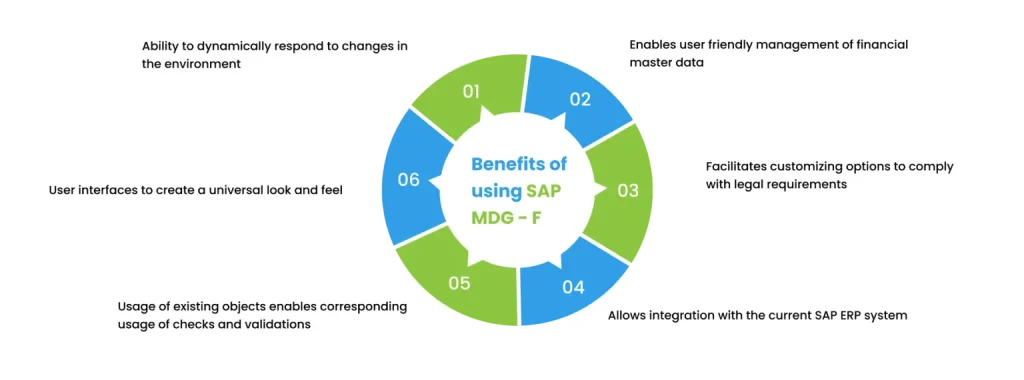Optimize financial data management with SAP MDG-F, ensuring accuracy, compliance, and efficiency for banks, financial services, and insurance.
Data is collected from various banking systems in the BFSI sector (banks, financial services and Insurance) and is scattered across different business units. Therefore, the need of the hour is a single unified view of the data for better operational capabilities with the right governance mechanism in place.
Banks, Insurance companies and financial service providers are constantly facing challenges with respect to irregularities in financial master data, manual workflows in a heterogeneous system landscape, data standards and policies, meeting complex regulation standards, transparency in audit trails and managing time-independent data provisioning.
Due to these issues, apart from operational efficiency getting affected, a gap will arise in the inputs needed for financial statements. That, in turn will have an adverse effect on evaluations and subsequent manual adjustments. Hence, it is imperative for the BFSI sector to improve operational efficiency, compliance norms, planning and analysis using SAP banking solutions.


SAP Master Data Governance Finance (MDG F) helps in the central maintenance and governance of a broad range of financial master data providing the BFSI sector with SAP banking solutions (which includes MDG Bank, MDG Insurance etc). This is where SAP MDG Finance for master data governance of banks (MDG bank), Insurance (MDG Insurance) and Financial services steps in, facilitating an integrated, central robust data management and governance framework.
LMTEQ provides expert consulting and implementation services on SAP MDG Finance (MDG F).
We, at LMTEQ provide you complete support and services in the implementation of SAP MDG F accounting, controlling and consolidation objects such as